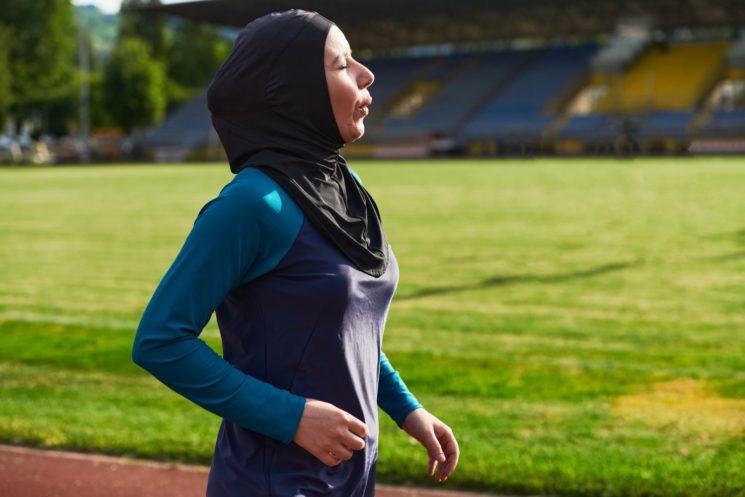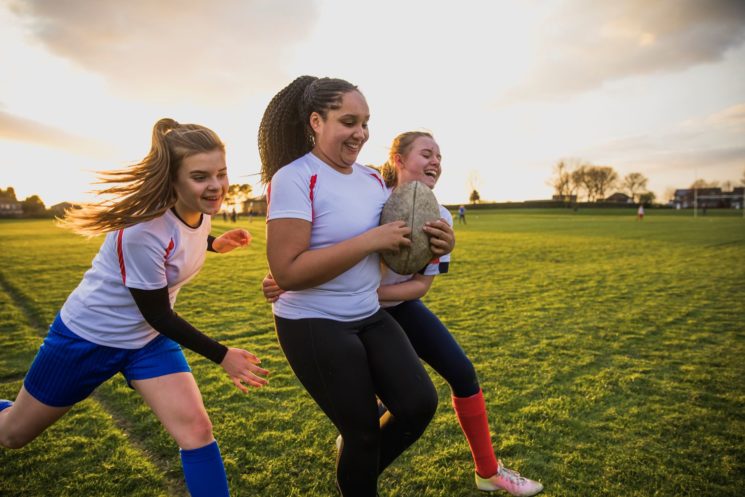
Anterior cruciate ligament (ACL) injuries are common in those that regularly participate in sports such as football, skiing and basketball. We spoke to Mr Saket Tibrewal, Consultant Knee Surgeon, to find out more about ACL injuries and their treatment.
What is an ACL injury?
Your knee is a hinge joint comprised of three bones: the thigh bone (femur), shin bone (tibia), and kneecap (patella). These bones are connected by bands of tissue called ligaments. A ligament is a structure that holds the bones together and helps to control joint movement or motion. There are four main knee ligaments: there is a ligament on each side of the knee called the collateral ligaments, and two ligaments deep inside the joint called the cruciate ligaments, which cross each other.
The anterior cruciate ligament (ACL) runs through the middle of the knee. The ACL helps to control rotational movements of the knee, as well as preventing the shin bone from sliding forwards in front of the thigh bone. Behind the ACL is the posterior cruciate ligament (PCL), which prevents the shinbone from sliding backwards behind the thigh bone. The PCL is thicker and stronger than the ACL and is damaged less often.
Most ACL injuries occur during sports that involve sudden changes in direction, like football or skiing. ACL injuries can also be caused by excessive bending or straightening of the leg, a blow to the knee, twisting movements, or awkward landings when jumping (e.g. basketball, netball, or rugby). They can also be caused by other mechanisms, such as falls or motor-vehicle accidents.
At the time of the injury, a person will usually describe hearing or feeling a 'snap' or a 'pop'. They may feel like their knee has dislocated and may describe severe pain and swelling. Typically, they will not be able to continue playing or activity.
How are ACL tears treated?
Treatment for an ACL injury depends on how bad your injury is. Your injury will be graded on a scale from 1 to 3:
Grade 1
A grade 1 injury means the ACL has been overstretched or 'sprained' but not torn. The ACL still provides stability to the joint. This type of injury does not require surgery.
Grade 2
Grade 2 injuries are more rare. The ACL is stretched and partially torn. Partial tears can usually be managed without the need for surgery, through the use of rest, anti-inflammatory medications, and physiotherapy. If non-surgical management does not work or there is persistent instability, then these injuries may require surgery.
Grade 3
Grade 3 tears are when the ACL is fully torn and does not provide stability to the joint. If there is persistent instability then surgery is indicated. This type of surgery is called an ACL reconstruction.
ACL surgery
ACL reconstruction is usually carried out arthroscopically (known as keyhole surgery). Because keyhole surgery uses only small incisions, patients may benefit from reduced scarring and faster recovery times.
To reconstruct the ACL, a piece of tendon (the donor graft) must be acquired from another part of the patient’s body – there are a variety of options with the most common being hamstring, quadriceps or patella tendon. Holes are made in the thigh bone and shin bone and the tendon graft is placed and secured into position with screws or special buttons. This tendon acts as a scaffolding and over time the body converts the tendon graft tissue into a more ligament-like structure.
The entire surgery usually takes between 60 to 90 minutes to complete, dependent upon the complexity and other associated procedures required, such as cartilage repair or extra-articular augmentation of the knee.
Some patients may require a knee brace and most can go home on the same day.
How long does it take the ACL to heal without surgery?
Non-surgical recovery time for an ACL injury depends on the severity of your injury.
Grade 1 injuries can heal within two to four weeks with treatments such as anti-inflammatory medications and following the RICE method (rest, ice, compression and elevation).
Grade 2 injuries can heal within six to eight weeks if using non-surgical methods. If there is persistent instability, then these may require surgery.
How long does it take the ACL to heal with surgery?
This varies from patient to patient but on average it usually takes six to nine months to make a full recovery from an ACL reconstruction. However, returning to pivoting and contact sport is not advised until 1 year following the surgery.
Main things to expect during an ACL surgery recovery period
For two to three weeks following surgery, your knee will feel stiff, sore and swollen. Your consultant will recommend you keep your knee elevated, use ice packs, and take anti-inflammatory medications to ease swelling. You may also need to use crutches during this time.
To aid in your rehabilitation, your physiotherapist will demonstrate some exercises that you can start as soon as you are home from hospital.
You will gradually be able to return to your normal activities between two to six months following surgery, and you should be able to partake in exercises that require less weight-bearing – such as swimming or cycling. The physiotherapist will graduate your activity level and return to sport based upon on your progress with the rehabilitation program.
You will be able to drive once you can fully weight bear on your foot again, but is usually advised to wait until four to six weeks following the surgery.
What injury is worse - ACL or Achilles?
Both injuries have significant implications for the patient.
The Achilles tendon is a strong band of tissue that connects the muscles at the back of the calf to the heel bone. Like the ACL, it can be torn, resulting in an Achilles injury.
An injury to the Achilles tendon can be detrimental to the careers of professional sportspeople, as recovery usually prevents any sporting activity for at least one year. Some players may not re-gain the level of speed and agility they had prior to the injury.
Those who have recovered from an ACL injury or an Achilles tendon injury should take precautions to prevent re-injuring themselves. Re-injury is associated with complications, such as an increased risk of osteoarthritis.
Why are ACL injuries more common in females?
This is particularly topical given the large number of ACL injuries in the last 12 months to female professional footballers. According to research, an ACL tear is one acute injury that female athletes are six to eight times more likely to experience than males.
It is still not clear why ACL injuries are more common in women than men, and further research is required to investigate this. However, it is thought to be a combination of multiple factors including anatomical differences and hormone levels.
Anatomically, the female pelvis is wider, which changes the mechanics of how the thigh bone, tibia, and femur function. This puts more stress on the soft tissues that support the joints. This higher stress can lead to either a chronic (overuse) or acute (sudden) injury.
Additionally, women have less muscle mass around their knees than men, which can lead to instability and a higher chance of tearing a ligament if it is overstretched.
Women also produce less testosterone, a hormone that supports muscle density, and more oestrogen, which may contribute to increased laxity in ligaments and joints. This could predispose them to higher risk of injury. Another theory is that of the menstrual cycle playing a key role in injury risk, as oestrogen levels fluctuate through the cycle this might make women more prone to injury when levels are higher.
At present there is not enough evidence to support these theories, but hopefully we will be able to rectify that going forwards. I also feel that there needs to be more education around injury prevention training, such as the FIFA 11+ program.
How much does ACL surgery cost?
If you’re looking to pay privately for ACL surgery, our dedicated Self-Pay team will be able to provide you with personalised advice and support – from walking you through our flexible payment plans to helping you choose the right consultant. There’s no obligation to book an appointment when you call us, and we’d be happy to answer any questions you might have.
To find out the latest prices for ACL surgery at Cromwell Hospital, please visit our dedicated page.


